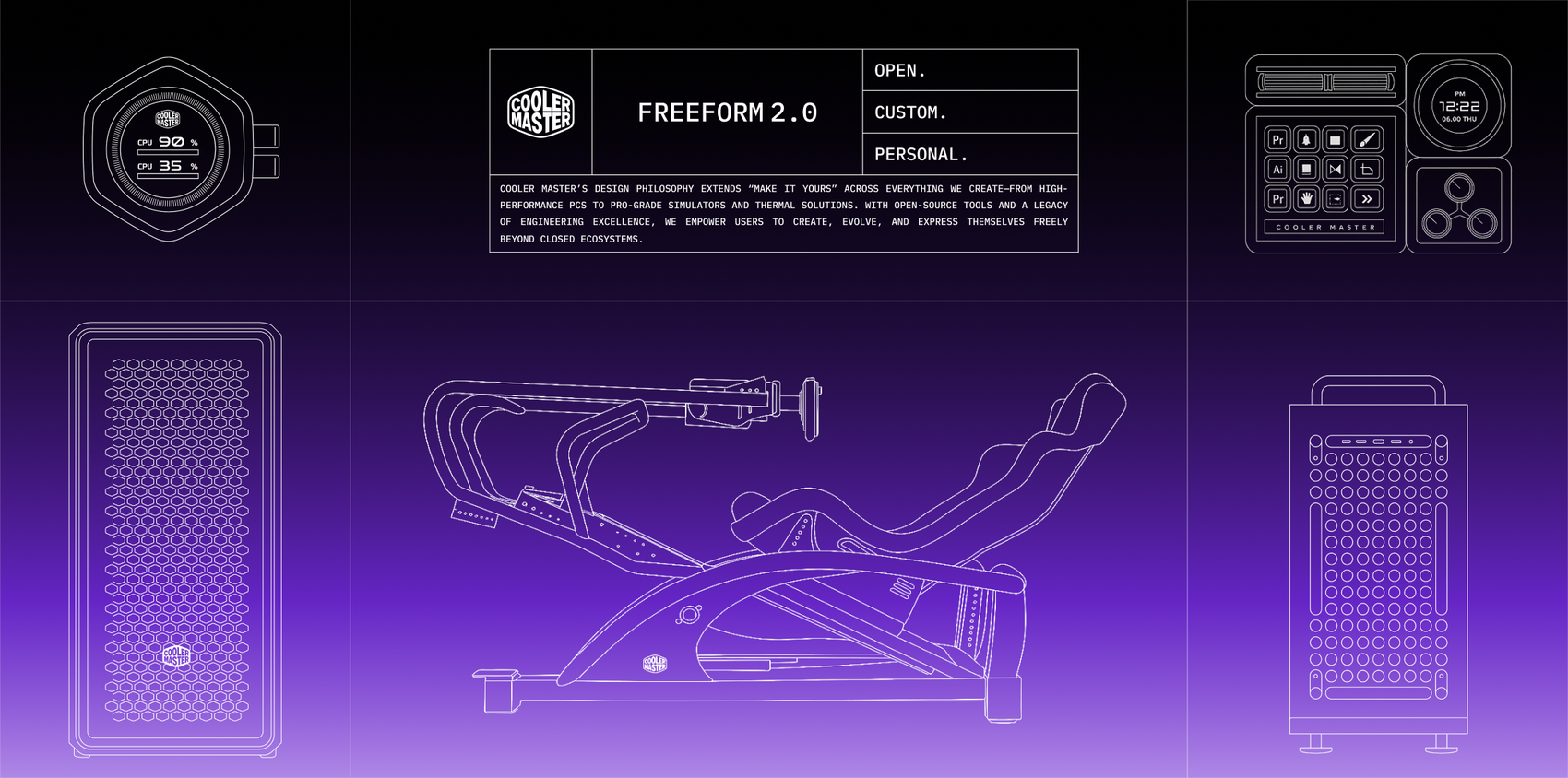FreeForm 2.0 supports more than just flexibility. It supports performance. Whether you’re building a compact battle station or a full-tower showcase, FreeForm’s design framework gives gamers control over layout, thermal solutions, and expansion. Your hardware can match your playstyle, and your case can grow as your needs shift.
FreeForm 2.0 supports more than just flexibility. It supports performance. Whether you’re building a compact battle station or a full-tower showcase, FreeForm’s design framework gives gamers control over layout, thermal solutions, and expansion. Your hardware can match your playstyle, and your case can grow as your needs shift.
Setup Flexibility
Game genres place different demands on your system layout. FPS players may prioritize GPU cooling and response time, while MMO or sim racers often need broader I/O setups, streaming integration, or expanded peripheral support. FreeForm gives users the ability to arrange hardware around their use case, not just the physical limits of a case.
Modular components allow for quick reconfiguration of airflow paths, cable management, or control surfaces. A player who streams and competes might want a MasterHub within reach of the keyboard. Someone with a VR headset or sim racing gear may prefer wider mounting points and extra side clearance for accessories. FreeForm helps you design around your game.
Flexible orientation matters here, too. Brackets and trays support both vertical and horizontal positioning. That gives builders more control over airflow paths and internal layout, which can have a measurable impact on stability and thermals during long sessions.
Hardware Compatibility
Gaming rigs are often built around one or two critical components: GPUs and cooling systems. FreeForm was developed with these priorities in mind. It supports today’s oversized graphics cards, extended ATX motherboards, and advanced AIO or custom-loop cooling without clearance issues or awkward workarounds.
FreeForm-enabled cases let you fine-tune the bracket alignment, orientation, and clearance for your core components. You can shift airflow to focus on the GPU, adjust memory clearance, or reorient radiators based on the thermal zones in your build.
Because Cooler Master controls its own development pipeline, FreeForm cases and accessories are built to match the evolving requirements of next-gen GPUs and other components. This isn’t a static platform. It grows with each product generation.
For overclockers, this kind of fine-grain control over thermal pathways and component layout is part of the process. Having a system that supports large, high-performance parts without modification means fewer surprises and fewer compromises.
Personalization by Genre or Role
No two gamers play the same way. Someone building a Valorant-focused rig will have different needs than a streamer who uses OBS, Discord, and Photoshop. FreeForm allows both to prioritize what matters for their workflow and performance.
For competitive players, this might mean removing all non-essential components, maximizing airflow, and positioning the GPU directly beneath focused cooling. Lighting might be minimal or eliminated altogether to reduce distractions.
For streamers or creators, layout is often more complex. A secondary display may need HDMI passthrough support, external capture gear might demand better cable management, and MasterHub modules can be installed in accessible positions without blocking other components. FreeForm supports this kind of role-specific design with modular add-ons and open layout options.
Builders who create showcase rigs can experiment with color coordination, vertical GPU mounts, or clear panel visibility. Every adjustment you make—from I/O location to cable routing—can support a specific genre, use case, or personal aesthetic.
It’s not just that FreeForm accommodates personalization. It invites it. The entire system is structured to reward experimentation with layout, look, and use. Instead of having to fight the form factor to get what you want, you shape it to fit how you game or work.
Why It Matters
Gaming systems are specialized tools for how you compete, create, or relax. FreeForm supports that by making the system match you—not the other way around.
Being able to change your configuration easily encourages long-term experimentation. Maybe you’re switching from solo play to co-op streams, or adding new gear to support VR titles. With a rigid setup, those changes are frustrating. With FreeForm, they’re expected.
Gaming evolves. Playstyles shift. Performance demands grow. FreeForm recognizes that no system should be frozen in time. With the right layout and component support, your rig can grow alongside you. You’re not stuck with your first configuration. You can keep improving it without replacing the foundation.
Related Articles
• Modular Components - Evolving Your Setup Effortlessly

